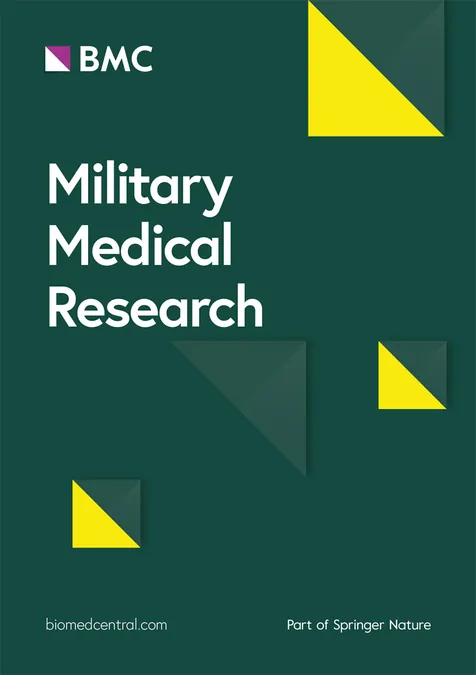
Space Medicine Breakthroughs: The Global Quest for Astronaut Health
2025-01-03
Author: Arjun
Introduction
In a groundbreaking exploration of space medicine, recent research aboard the International Space Station (ISS) has unveiled critical insights into the health challenges faced by astronauts. Key studies have highlighted issues such as bone density loss, muscle atrophy, and cardiovascular changes that become pronounced during extended periods in microgravity.
One of the most pivotal pieces of research, NASA's Twins Study, closely examined astronaut Scott Kelly, who spent nearly an entire year in orbit, compared to his twin brother Mark Kelly, who remained on Earth. This highlighted drastic changes in bodily functions due to spaceflight, enhancing our understanding of how prolonged exposure to weightlessness alters the human body.
The Space Omics and Medical Atlas (SOMA)
A monumental publication titled "The Space Omics and Medical Atlas (SOMA)" in Nature marks a significant stride forward in the field, synthesizing data from the Twins Study alongside findings from over 100 institutions globally. This ambitious collaboration aims to create the most extensive catalog ever of the molecular and physiological effects of space travel.
Utilizing cutting-edge technologies such as single-cell sequencing and artificial intelligence, researchers are diving deep into the complexities of astronaut health, paving the way for predictive models that could foresee health issues before they arise.
Furthermore, SOMA's establishment of an international astronaut biobank ensures the preservation of viable samples for ongoing and future research. This initiative not only reflects the collaborative spirit of global scientific efforts but also promises to expedite advancements in space medicine through shared knowledge and resources.
Chinese Contributions to Space Medicine
On the other side of the world, the Chinese Space Station (CSS) has reached new heights, becoming fully operational by the end of 2022. With multiple manned missions under its belt, China has gained profound insights into space medicine, countering the physiological effects of prolonged weightlessness.
The CSS has undertaken groundbreaking experiments, including a world-first in capturing three-dimensional images of skin cells aboard its Tiangong space station, enhancing our understanding of skin structure and cellular responses in microgravity.
Challenges of Future Missions
However, the risks associated with future manned lunar and Mars missions grow increasingly complex. Astronauts will face significant health risks, including exposure to space radiation, which is linked to heightened cancer risk and potential alterations in the gut microbiome.
The extended periods of microgravity exacerbate these issues, as they affect various organ systems, leaving astronauts vulnerable to acute medical emergencies that require immediate, expert medical guidance from Earth.
Mental Health Considerations
Mental health is another vital concern. The isolation of space travel can lead to anxiety and depressive disorders, making psychological support paramount for mission success.
Additionally, the risk of infection is higher in space, necessitating stringent protocols to manage health risks effectively.
Innovative Technologies in Space Medicine
Looking to the future, more innovative technologies need to be integrated into space medicine research. Artificial intelligence and machine learning could become critical allies, enhancing decision-making and personalized health interventions for astronauts.
Developments in wearable health-monitoring devices and biotechnologies like 3D bioprinting show promise for advancing astronaut health during long missions.
Potential of Traditional Chinese Medicine (TCM)
Interestingly, Traditional Chinese Medicine (TCM) is also being recognized for its potential benefits in space. The principles of TCM promote preventive care, which is particularly advantageous for astronauts in confined environments, suggesting a promising blend of ancient practices with modern scientific methods.
Adapting to Space Tourism
As space tourism becomes a reality, the field must adapt to accommodate a wider range of individuals. Clear medical protocols tailored for prospective space tourists will be essential to ensure their safety, given the possibility of preexisting health issues.
Conclusion
In summary, the advancements and collaborations in space medicine herald a new era of understanding human health in the cosmos. From the ISS to the CSS, the global community is uniting to tackle the daunting challenges of space travel, ensuring that our journey beyond Earth is safe, healthy, and sustainable. Exciting discoveries await as we continue to push the boundaries of what is possible while protecting the health and well-being of astronauts on their extraordinary journeys.
 Brasil (PT)
Brasil (PT)
 Canada (EN)
Canada (EN)
 Chile (ES)
Chile (ES)
 Česko (CS)
Česko (CS)
 대한민국 (KO)
대한민국 (KO)
 España (ES)
España (ES)
 France (FR)
France (FR)
 Hong Kong (EN)
Hong Kong (EN)
 Italia (IT)
Italia (IT)
 日本 (JA)
日本 (JA)
 Magyarország (HU)
Magyarország (HU)
 Norge (NO)
Norge (NO)
 Polska (PL)
Polska (PL)
 Schweiz (DE)
Schweiz (DE)
 Singapore (EN)
Singapore (EN)
 Sverige (SV)
Sverige (SV)
 Suomi (FI)
Suomi (FI)
 Türkiye (TR)
Türkiye (TR)
 الإمارات العربية المتحدة (AR)
الإمارات العربية المتحدة (AR)